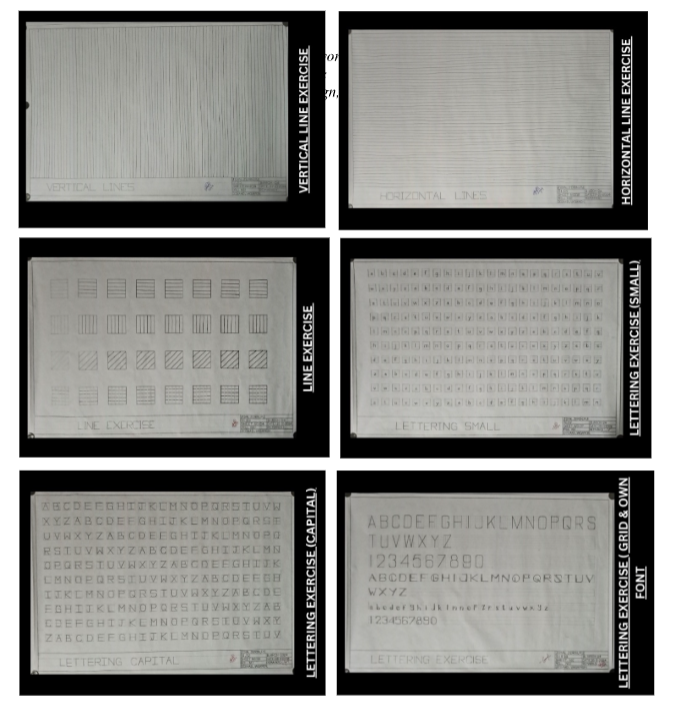
Ar.Keerthana KP Assistant professor DC school of Architecture and Design,Vagamon
As part of the Basic Design subject in the first year of the B.Arch program, from B.Arch Architecture colleges in Kerala, the modules on ‘Exploring Lines in Design and Lettering’ will play a crucial role in helping students build a strong foundation in architectural communication and expression, students will engage with two foundational elements of architectural communication: the line and typography. These exercises will introduce students to the versatility and power of these elements, encouraging them to see design not only as a technical skill but also as a means of expression and communication.
The Meaning of Visual Elements in Architectural Design
Both modules aim to deepen their understanding of how simple visual elements, like lines and letters, can convey movement, structure, and meaning in architectural design. Learning the core principles of design is a fundamental step for students looking to pursue their education at DC School of Architecture And Design, Architectural colleges in Kerala, and this exercise will help develop their sensitivity to precision, structure, rhythm, and clarity in both form and communication.
The Exploring Lines in Design exercise will begin by familiarizing students with various line types such as straight, curved, broken, zigzag, spiral, and freehand. Students will create compositions using these lines, either individually or in combination, learning how they contribute to visual rhythm, hierarchy, directionality, and spatial definition. Through guided
experiments, students will explore how subtle variations in line weight, stroke density, length, and angle can influence the emotional and spatial effects of their work, helping them to suggest architectural elements like walls, paths, and perspectives. This will teach them to see lines as conceptual representations of space, whether they define boundaries, axes, circulation paths, or sectional cuts.

By focusing on the expressive qualities of lines, students of B.arch Architecture colleges Kerala will discover how line variations can create effects like tension, balance, and movement, essential for conveying spatial dynamics in architectural forms. The distinction between freehand sketching and structured line work will help students refine both their intuitive and technical drawing skills. This understanding will be integral as they progress in technical drawing, site planning, conceptual diagrams, rendering, and interior layouts, where lines are indispensable in forming coherent spatial narratives.
In the Lettering module, students will explore the role of typography as a design element, particularly through Roman lettering, known for its architectural lineage and geometric precision. Students will study the anatomy of Roman letterforms—such as vertical strokes, serifs, terminals, and proportions—gaining a deeper appreciation for how each character is constructed. The exercise will challenge students to treat each letter as a miniature architectural form, focusing on stroke consistency, spacing, and alignment to ensure clarity, legibility, and visual harmony.
This exercise will shift students’; perception of typography from a simple communication tool to a graphic composition. Through hand-drawing exercises, students will explore how line weight, alignment, and rhythm can create a harmonious visual language that reflects the conceptual and aesthetic intent behind their work. Additionally, students will experiment with other fonts and type styles, designing custom letterforms that reflect different moods, themes, and design goals. This will allow students to connect their creative instincts with typographic expression, fostering their ability to communicate visually and conceptually through type.
Together, these two modules will serve as a bridge between graphic presentation and spatial thinking, reinforcing the importance of both precision and creativity in design. By the end of these exercises, students will have developed a strong skill set in both line and typography.
They will be equipped to use these tools not only for representation but as essential components in visual communication. The ability to apply lines and lettering thoughtfully in design will help students express complex spatial and emotional ideas clearly and compellingly in their future projects, from site boards to architectural drawings and branding materials.
These exercises in B.arch will emphasize that effective design is not just about creating functional forms but about conveying meaning and identity. The skills developed in these foundational modules will support students throughout their architectural education and professional journey, enabling them to approach design challenges with both technical precision and creative flair.